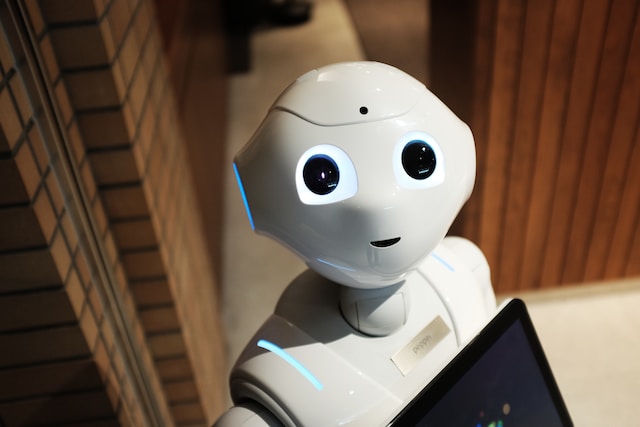Artificial intelligence (AI) refers to the creation of computer systems capable of performing tasks that historically only a human could do, such as visual perception, speech recognition, decision-making, and translation between languages. It is a field of study in computer science that develops and studies intelligent machines. AI is an umbrella term that encompasses a range of technologies, including machine learning, deep learning, and natural language processing (NLP) ². Although the term is commonly used to describe a range of different technologies in use today, many disagree on whether these actually constitute artificial intelligence. Instead, some argue that much of the technology used in the real world today actually constitutes highly advanced machine learning that is simply a first step towards true artificial intelligence, or “general artificial intelligence” (GAI) .
Today, AI is used in a wide range of applications, from chatbots that provide customer support to self-driving cars that can navigate roads autonomously. Some of the most common examples of AI in use today include:
– **ChatGPT**: Uses large language models (LLMs) to generate text in response to questions or comments posed to it.
– **Computer vision**: Enables machines to interpret and understand visual data from the world around them.
– **Speech recognition**: Allows machines to recognize and interpret human speech.
AI has the potential to revolutionize many industries and fields, from healthcare to finance to transportation. However, it also raises important ethical and societal questions about privacy, security, and the role of humans in a world increasingly dominated by machines.
How do start with Artificial Intelligence?
1. **Learn a programming language**: Python is a popular choice for beginners because it has many libraries that are well-suited to machine learning. You can find many online tutorials and courses that will teach you the basics of Python and how to use it for AI.
2. **Learn the basics of machine learning**: Machine learning is a subfield of AI that involves training computer systems to learn from data. There are many online courses and tutorials available that will teach you the basics of machine learning, including how to use popular machine learning libraries like TensorFlow and PyTorch.
3. **Practice with real-world datasets**: Once you’ve learned the basics of machine learning, it’s important to practice with real-world datasets. There are many datasets available online that you can use to practice your skills, including the famous MNIST dataset of handwritten digits.
4. **Join an online community**: There are many online communities dedicated to AI and machine learning where you can connect with other learners and experts in the field. These communities can be a great source of support and inspiration as you learn.
5. **Read books and research papers**: There are many books and research papers available on AI and machine learning that can help you deepen your understanding of the field. Some popular books include “Hands-On Machine Learning with Scikit-Learn, Keras, and TensorFlow” by Aurélien Géron and “Deep Learning” by Ian Goodfellow, Yoshua Bengio, and Aaron Courville.
The difference between AI Intelligence and machine learning
Artificial intelligence (AI) and machine learning (ML) are two related but distinct concepts. AI is a broad field of computer science that aims to create machines that can perform tasks that typically require human intelligence, such as visual perception, speech recognition, decision-making, and natural language processing. Machine learning, on the other hand, is a subset of AI that involves training computer systems to learn from data and improve their performance on a specific task over time. In other words, machine learning is a method for achieving AI.
To put it simply, AI is the goal, while machine learning is one way to achieve that goal. AI encompasses many different technologies and approaches, including rule-based systems, expert systems, and evolutionary algorithms. Machine learning is just one of these approaches.
Here’s an example to help illustrate the difference between AI and machine learning: imagine you want to create a system that can recognize faces in photos. One way to do this would be to write a set of rules that describe what a face looks like and how to recognize one. This would be an example of an AI system that uses rule-based programming. Another way to do this would be to train a machine-learning model on a large dataset of labeled images of faces. The model would learn to recognize faces by identifying patterns in the data. This would be an example of an AI system that uses machine learning.
How can Artificial Intelligence and humans work together?
AI and humans can work together in many ways to achieve better outcomes in various fields. This approach is called **collaborative intelligence**. Here are some examples of how AI and humans can work together:
– **Search and rescue missions**: Smart drones can work alongside human teams to scan terrain and deliver immediate support.
– **Storytelling**: AI can enhance the work of writers by generating ideas and responding to Twitter users’ suggestions.
– **Music composition**: Musicians can collaborate with AI to create original compositions by feeding their music ideas and inspiration into the AI, which will generate new melodies, accompaniments, and instrumentation.
– **Healthcare**: AI can help doctors diagnose diseases more accurately by analyzing medical images and patient data.
– **Customer service**: Chatbots can provide customer support by answering frequently asked questions and resolving issues.
By combining uniquely human capabilities such as intuition, judgment, and creativity with AI’s computational power and data processing skills, we can create a whole new workplace that is more efficient, productive, and innovative. However, it’s important to note that AI is not a replacement for humans but rather a tool that can help us achieve our goals more effectively.
Do not hesitate to ask us about Artificial Intelligence services. We may be the decisive step in your life. Contact us now, or follow up on our social media
(Facebook, LinkedIn, Instagram)



